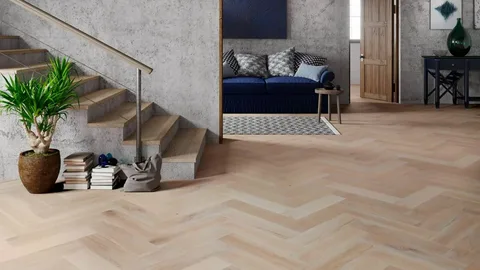Parquet flooring, with its intricate patterns and timeless appeal, offers a canvas of design possibilities to elevate any space. Whether your style is classic, contemporary, or somewhere in between, parquet flooring can seamlessly integrate and enhance your interior design. In this guide, we’ll explore various styling options and tips to make the most of this elegant flooring choice.
Classic Elegance with Herringbone Pattern
The classic herringbone pattern is a hallmark of parquet flooring, exuding elegance and sophistication. Pair it with traditional or vintage-style furniture to create a timeless and refined ambiance in your space.
Modern Simplicity with Chevron Design
For a sleek and modern look, opt for the chevron pattern. Its clean lines and contemporary appeal complement minimalist and modern interiors. Pair it with sleek furniture and neutral tones for a chic finish.
Luxury and Opulence with Versailles Pattern
The Versailles pattern, inspired by the grandeur of French palaces, brings opulence to any room. Incorporate it in large, open spaces with statement furniture and elaborate decor for a luxurious setting.
Texture and Contrast with Mixed Wood Species
Experiment with parquet flooring using a mix of wood species. The blend of contrasting grains and tones adds texture and visual interest, creating a unique and captivating flooring design.
Balancing Act: Light Parquet with Dark Furniture
Contrast light parquet flooring with dark-toned furniture to strike a perfect balance. The juxtaposition adds depth and highlights both the flooring and the furnishings, creating a dynamic visual impact.
Cozy and Inviting with a Rustic Basket Weave
Embrace a cozy, rustic atmosphere with the basket weave pattern. Pair it with warm, earthy tones and soft, comfortable furniture for a welcoming and inviting space.
Seamless Transition: Parquet Flooring in Open Floor Plans
In homes with open floor plans, use parquet flooring to create distinct zones or define different functional areas. The transition between patterns or styles can subtly guide the eye and designate spaces within the larger layout.


